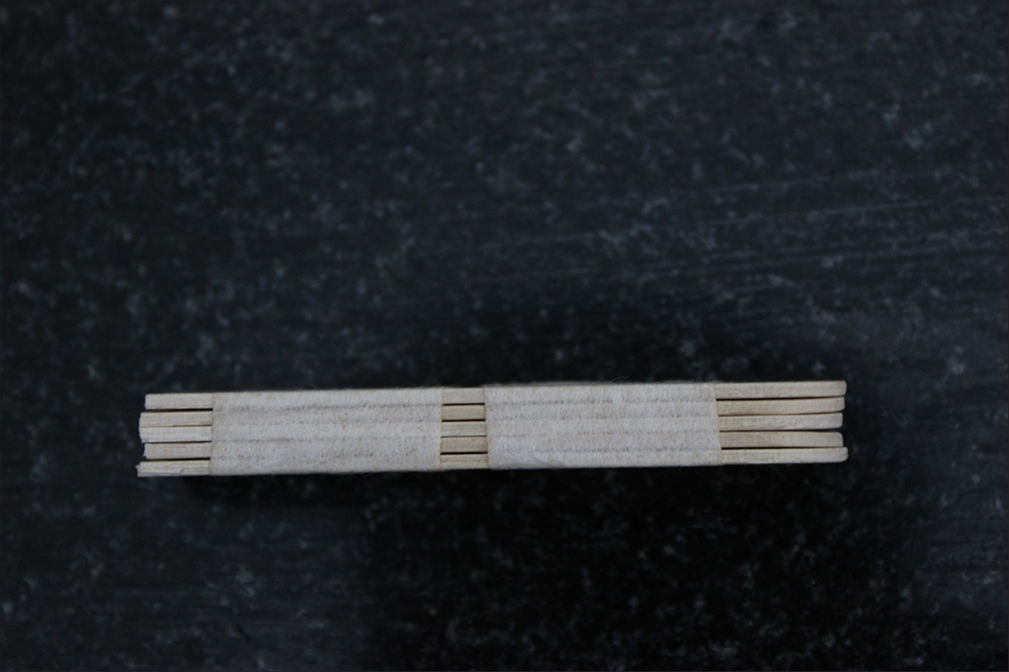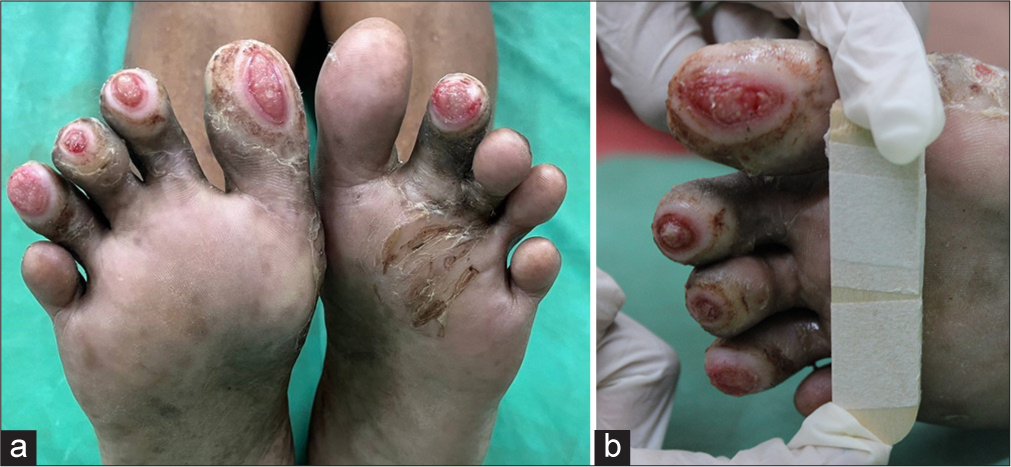Translate this page into:
DIY metatarsal bar using wooden spatula for offloading in trophic ulcers

*Corresponding author: Aravind Sivakumar, Department of Dermatology, Jawaharlal Institute of Postgraduate Medical Education and Research, Puducherry, Tamil Nadu, India. aravinddermat@gmail.com
-
Received: ,
Accepted: ,
How to cite this article: Ramesh N, Sivakumar A. DIY metatarsal bar using wooden spatula for offloading in trophic ulcers. CosmoDerma. 2025;5:39. doi: 10.25259/CSDM_28_2025
PROBLEM
Trophic ulcers are a common complication arising due to sensory or vascular compromise in conditions such as diabetes and leprosy. Ulcer offloading is a critical step in management as it expedites healing and faster recovery. Offloading of trophic ulcers can be achieved by strict bed rest, the use of crutches, wheelchairs, walkers, pressure-reducing measures like air cushions, waterbeds, plaster boots (total contact casting), removable contact casting, half shoes, or specialized footwear. However, these may not be readily available and are often cumbersome to wear leading to noncompliance and ulcer recurrence.[1]
SOLUTION
We propose the use of a wooden spatula as a novel offloading measure. A stack of wooden swab sticks measured and cut according to the breadth of the forefoot [Figure 1] is placed over the heads of the metatarsal bones [Figure 2a and b] acting as a metatarsal bar, thereby enabling pressure offloading while simultaneously allowing mobility of the patient [Figure 3a]. This method is simple to perform, easily available, cost-effective, allows for daily inspection of the ulcer, and can be performed on an outpatient basis. There is rapid healing of the ulcer noted after a week by this offloading procedure [Figure 3b]. The limitations of this method include the need for daily inspection of the ulcers for wound monitoring, as well as the risk of ulceration on the metatarsals due to improper application. In cases where feasible, total contact casting can be considered.

- Modification of the wooden spatula as metatarsal bar.

- (a) Trophic ulcer before offloading. (b) Correct placement of the metatarsal bar.

- (a) Offloading of forefoot as demonstrated. (b) Complete healing noted after 7 days.
Ethical approval
The Institutional Review Board approval is not required.
Declaration of patient consent
The authors certify that they have obtained all appropriate patient consent.
Conflicts of interest
There are no conflicts of interest.
Use of artificial intelligence (AI)-assisted technology for manuscript preparation
The authors confirm that there was no use of artificial intelligence (AI)-assisted technology for assisting in the writing or editing of the manuscript and no images were manipulated using AI.
Financial support and sponsorship: Nil.
References
- Trophic ulcers-practical management guidelines. Indian J Plast Surg. 2012;45:340-51.
- [CrossRef] [PubMed] [Google Scholar]





